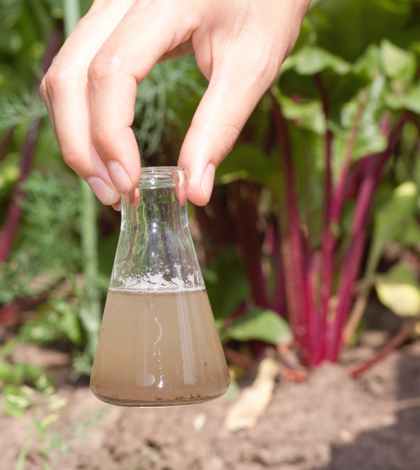While the contaminated water crisis in Flint, Michigan continues to make headlines throughout the country, water in California’s Central Valley – unfortunately – can steal their thunder. According to the AGUA Coalition, the Community Water Center and their allies there are more residents in California whose drinking water standards are failing than the entire population of Flint, MI.
More than 120 people attended a standing room only Capitol briefing for state legislators last week regarding access to safe and affordable drinking water. Some Central Valley residents have dealt with the problem for more than 25 years. And California’s five-year drought, though clearly lessening thanks to deluges of atmospheric rivers throughout the state, has only compounded the problem.
The problem runs deep in California and is compounded by two chemical elements – nitrates and arsenic. Arsenic occurs naturally in the ground but is compounded by the valley’s farming industry. Pesticides and fertilizers, used heavily in the state’s breadbasket region to produce bigger and better crops, sinks into the groundwater. Nitrates, caused by the state’s cattle industry via both the cows’ manure and other fertilizers.
Nitrates and arsenic sink into the groundwater and unless filtered out via expensive pumping systems, wends its way into local, usually private wells and into the local homes plumbing and faucets. Multiple Central Valley residents spoke with legislators about the reality of the problem.
“You can’t turn your faucet on and drink it. The only thing you can do is bathe in it and flush it down the toilet,” said Becky Quintana, a resident of Seville, California. “In our school, we’re having to bring in porta-potties because we’re running out of water. We shouldn’t have to close the school for health problems. Seville is like a Flint, Michigan. We really need to take care of this issue before it’s put out there into the world about what it’s really like here.”
Central Valley residents have been forced to either drill deeper for water or drill completely new wells. However, drilling deeper sometimes only compounds the issue as often times additional contamination is found and renders the water unusable. Other times, drilling entirely new wells only results in locating more contamination.
“Our first well got contaminated in 1990, the second in 1993, and the final one in 2003. They found not only just nitrates, but also TCP. We had to prove to the county that people were getting sick, having rashes and red eyes, from the water,” said Horacio Anezquita, a farmer and resident of San Jerardo.
Nitrates and arsenic can result in a variety of health concerns. Excess nitrate can cause many problems for pregnant women and babies – miscarriages, stillbirths, premature births and sudden infant death. Diarrhea and cancer are also linked to excessive consummation of nitrates. Boiling water does not remove nitrates and is not a treatment alternative. In fact, boiling water increases nitrate concentrations as the water evaporates.
Symptoms of arsenic poison can include thickening and discoloration of the skin, stomach pain, nausea, vomiting, diarrhea, numbness in hands and feet, partial paralysis, and blindness. High levels of arsenic can cause serious health effects as it is a known human carcinogen, or cancer-causing agent. It also has been reported to affect the vascular system in humans and has been associated with the development of diabetes. Arsenic occurs naturally in rocks and soils, and the waters that come in contact with these rocks and soils but it is odorless and tasteless.
According to polling done by Fairbank, Maslin, Maulin, Metz & Associates, strong majorities of Californians are willing to pay as much as four dollars a month on their water bill to fix unsafe levels of drinking water contamination. The polling included recently conducted phone interviews with 1,000 California voters to assess their views on threats to drinking water.
Senator Eduardo Garcia, chair of the Senate Water, Parks and Wildlife Committee, specifically summed up the situation saying, “We have to be mindful of the costs, but also putting forward the public health interests of the people we represent.”
 California Water News Daily Your Source For Water News in California
California Water News Daily Your Source For Water News in California


